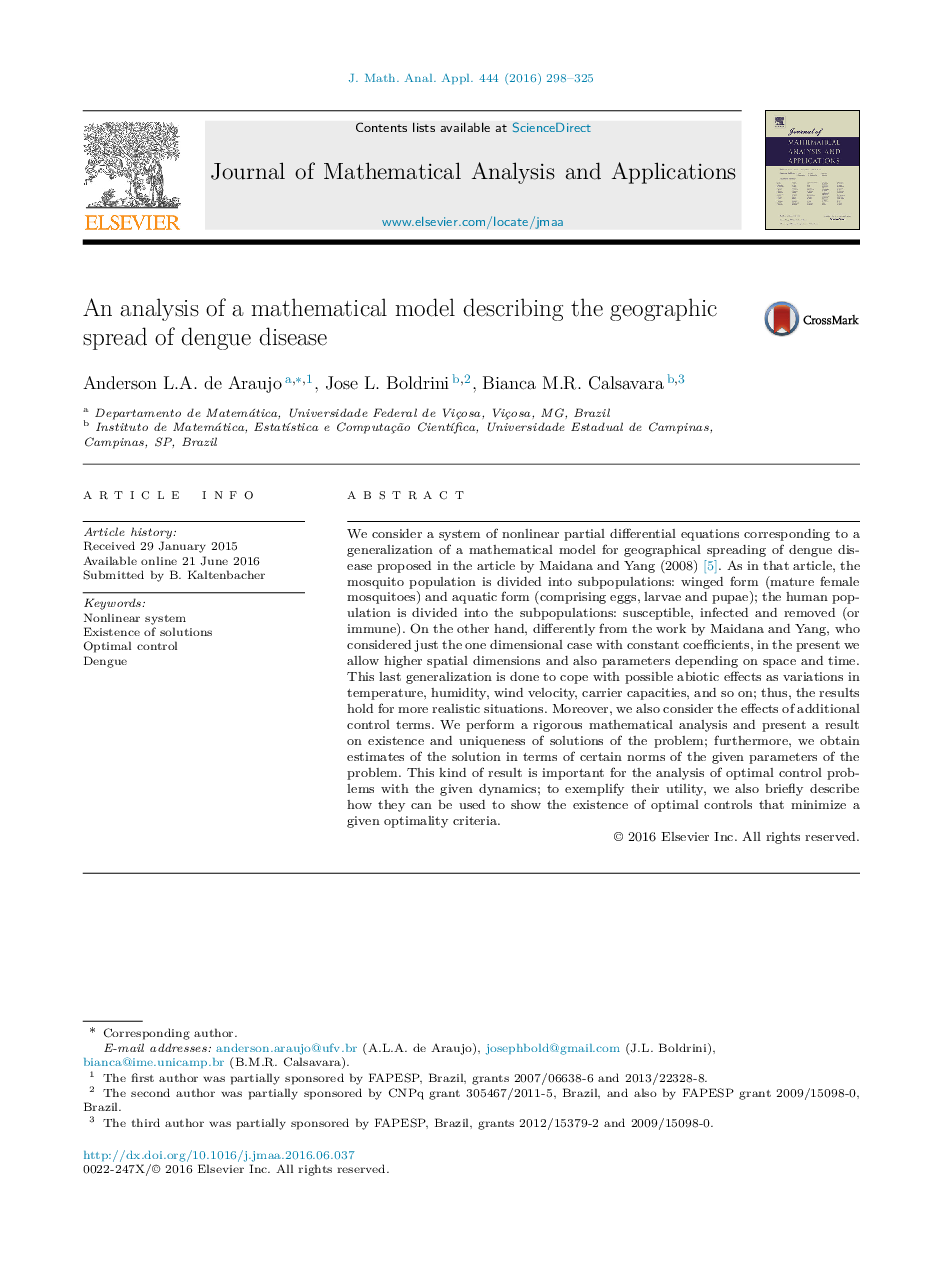| کد مقاله | کد نشریه | سال انتشار | مقاله انگلیسی | نسخه تمام متن |
|---|---|---|---|---|
| 4613882 | 1339274 | 2016 | 28 صفحه PDF | دانلود رایگان |
We consider a system of nonlinear partial differential equations corresponding to a generalization of a mathematical model for geographical spreading of dengue disease proposed in the article by Maidana and Yang (2008) [5]. As in that article, the mosquito population is divided into subpopulations: winged form (mature female mosquitoes) and aquatic form (comprising eggs, larvae and pupae); the human population is divided into the subpopulations: susceptible, infected and removed (or immune). On the other hand, differently from the work by Maidana and Yang, who considered just the one dimensional case with constant coefficients, in the present we allow higher spatial dimensions and also parameters depending on space and time. This last generalization is done to cope with possible abiotic effects as variations in temperature, humidity, wind velocity, carrier capacities, and so on; thus, the results hold for more realistic situations. Moreover, we also consider the effects of additional control terms. We perform a rigorous mathematical analysis and present a result on existence and uniqueness of solutions of the problem; furthermore, we obtain estimates of the solution in terms of certain norms of the given parameters of the problem. This kind of result is important for the analysis of optimal control problems with the given dynamics; to exemplify their utility, we also briefly describe how they can be used to show the existence of optimal controls that minimize a given optimality criteria.
Journal: Journal of Mathematical Analysis and Applications - Volume 444, Issue 1, 1 December 2016, Pages 298–325
